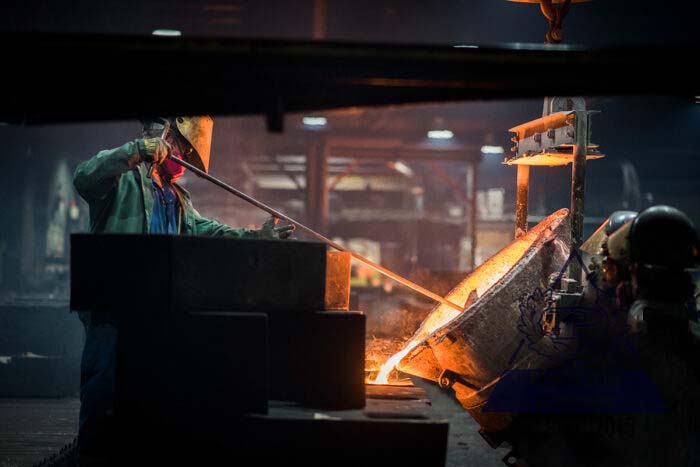Ductile Iron ASTM A536 Grade 120-90-02
on February 2, 2021Related Standards – SAE J434c, UNS F36200, EN-JS 1080, ISO 800-2

Martensitic Ductile Iron (120-90-02) has low to zero pearlite formation due to specific alloy additions, and can be quite hard and brittle in its untempered form. A quench and temper heat treatment process is used to develop extremely high strength and wear resistant material, with low levels of ductility and toughness. This quench and temper process also allows the martensitic ductile iron to be machined.
Unlike austempered ductile irons, the heat treatment required to produce 120-90-02 can be performed at some foundries and most commercial heat treaters. It is important to temper the casting soon after quenching to relieve internal stresses.
Chemistry requirements are not specified in the ASTM A536 standard. Chemistry and hardness listed in this spec would be typical for a Grade 120-90-02.
Composition of ASTM A536 120 – 90 – 02
| C | Mn | Si | Cr | Ni | Cu | Mg | |
| Min% | 3.0 | 0.15 | 1.5 | 0.03 | 0.05 | 0.15 | 0.03 |
| Max% | 3.8 | 1.00 | 2.8 | 0.07 | 0.2 | 1.00 | 0.06 |
Physical and Mechanical Properties of ASTM A536 120 – 90 – 02
| UTS (psi) | 120000 |
| YS (psi) | 90000 |
| %Elongation min | 2% |
| Hardness (BHN) | 270-331 |
| Density (lb/in3) | 0.257-0.260 |
| Thermal Conductivity (Cal/cmsec °C) | 0.074 |
| Specific Heat at 70F (Btu/lb°F) | 0.12 |
| Melting Temperature (F) | 2120 |
Machinability
Determining machinability is often linked to hardness, due to the connection between hardness and microstructure. This is true for similar microstructures, but a tempered martensitic matrix will demonstrate better machinability than a pearlitic matrix of a similar hardness.
Read: “Ductile Iron Machining Advantages” for more information on the machining advantages ductile iron.
Design Advantages with 120-90-02
- High Strength
- Good Wear Resistance
- Machinability
Pro Tip: The blog, “Top 5 Design Mistakes in Ductile Iron Castings” offers trouble shooting tips for designing with ductile iron.
Preferred Applications for ASTM A536 120 – 90 – 02
- Pinions
- Gears
- Rollers
- Slides
Read: To learn more about ductile iron, check out our ductile iron webpage.

